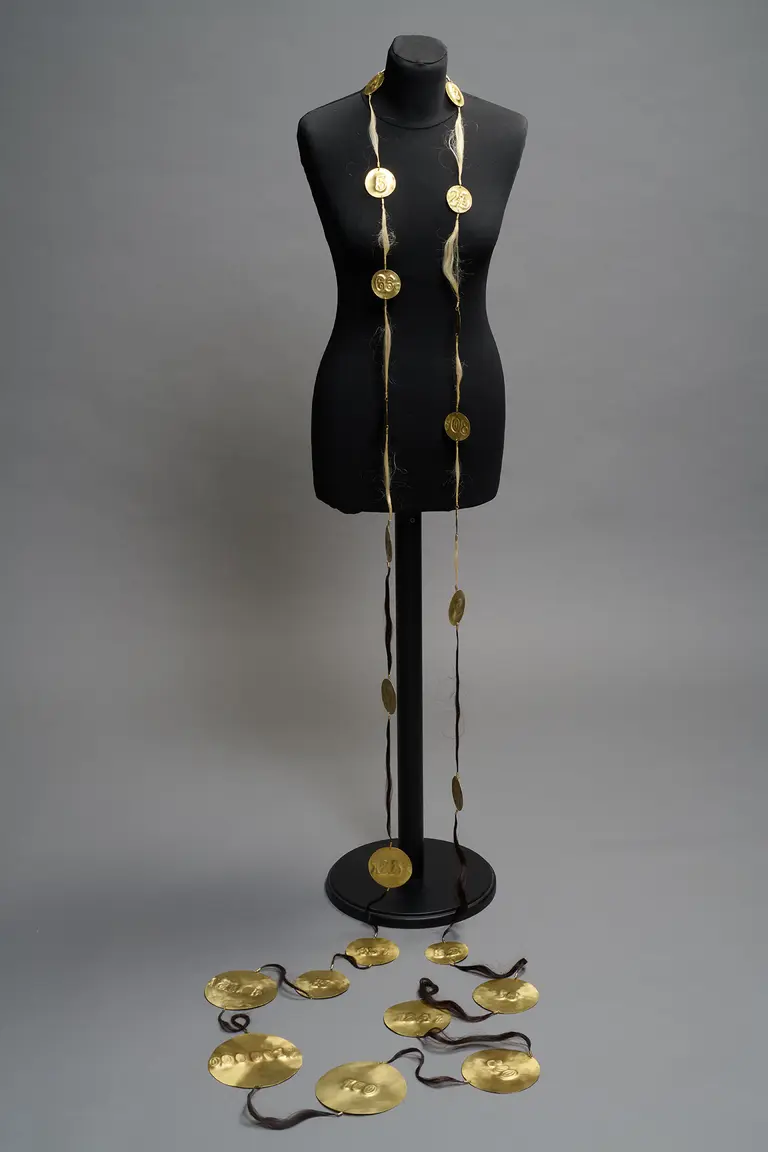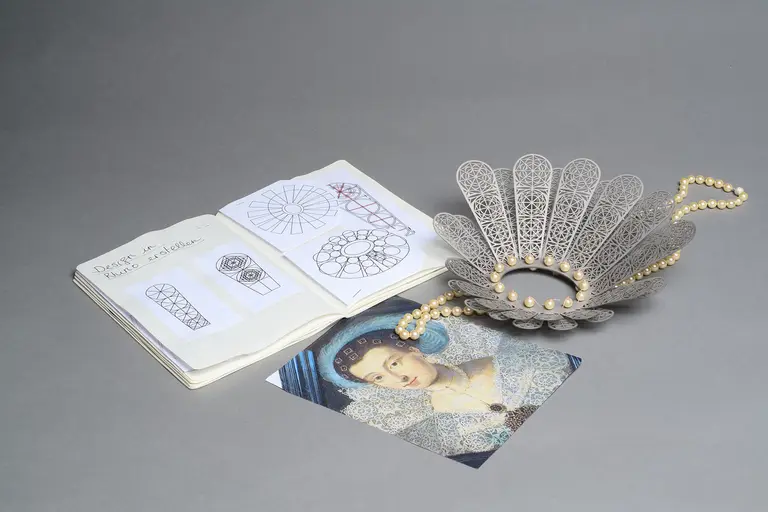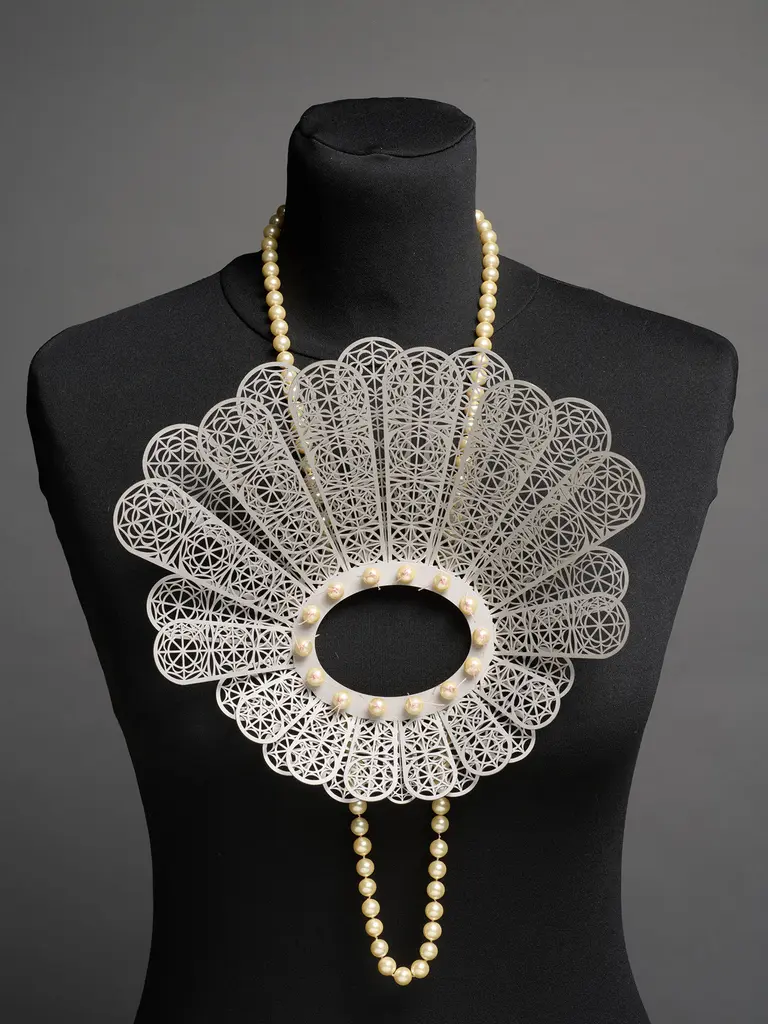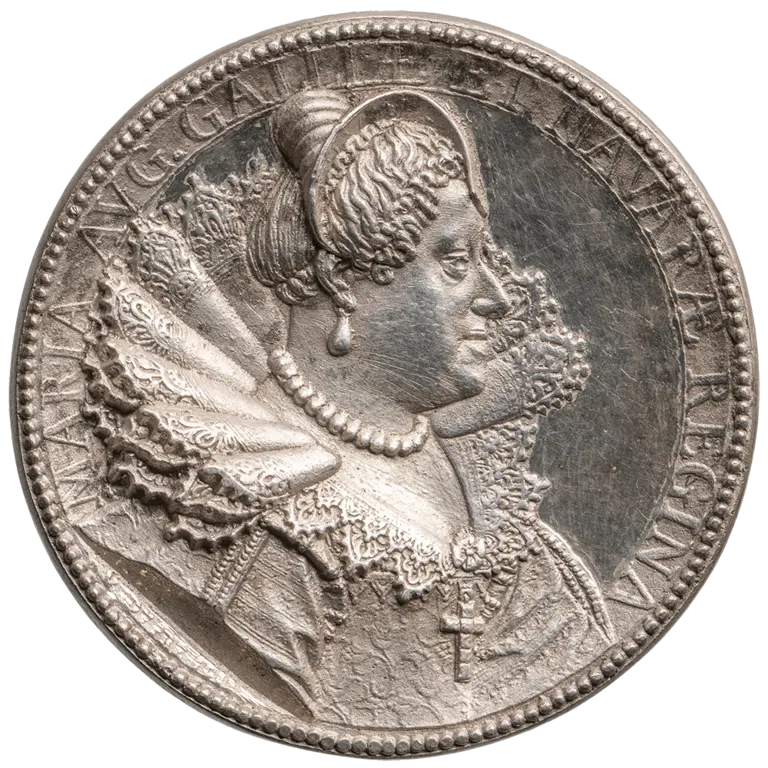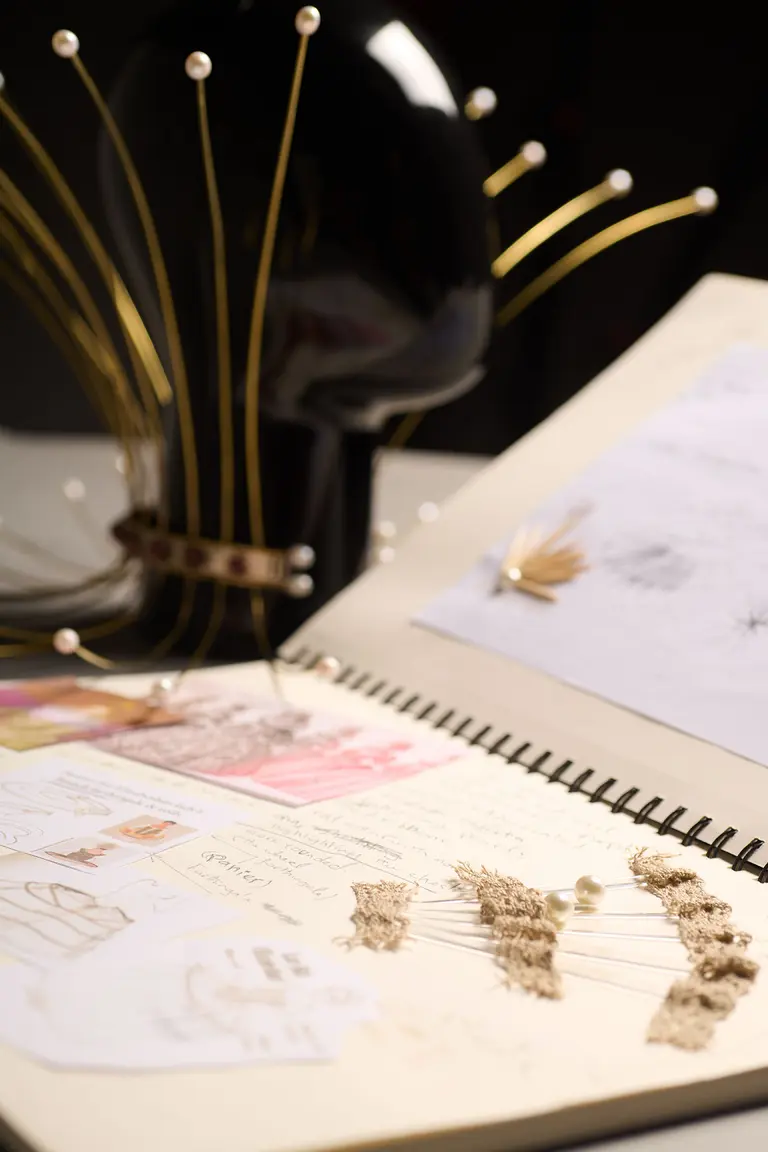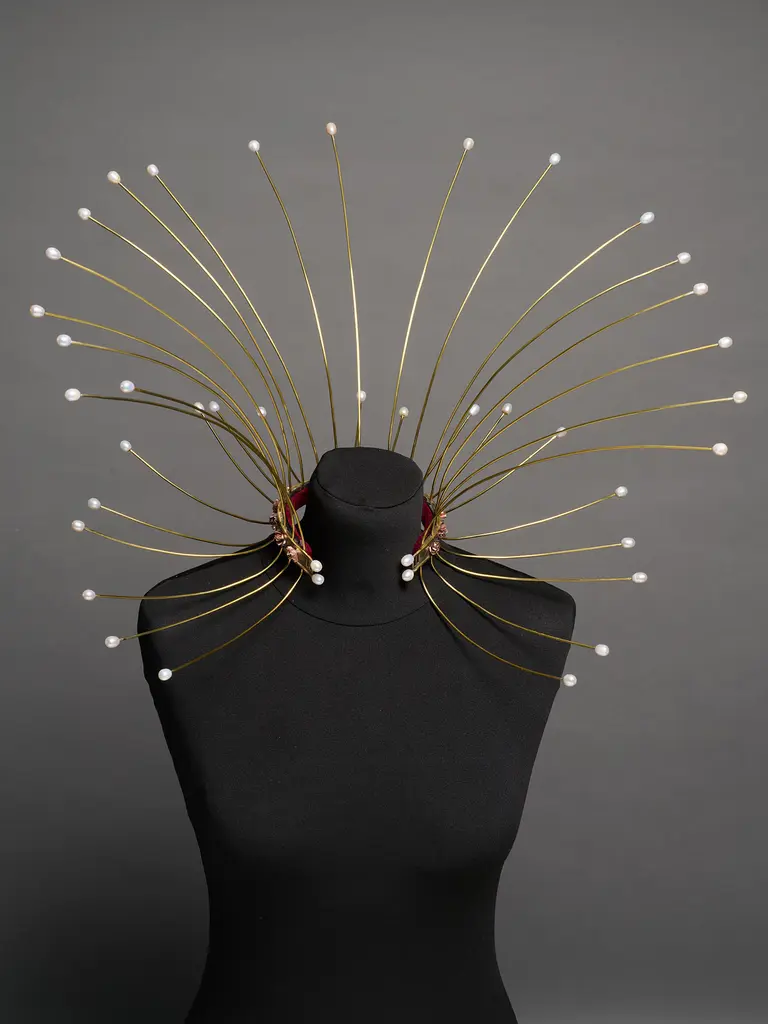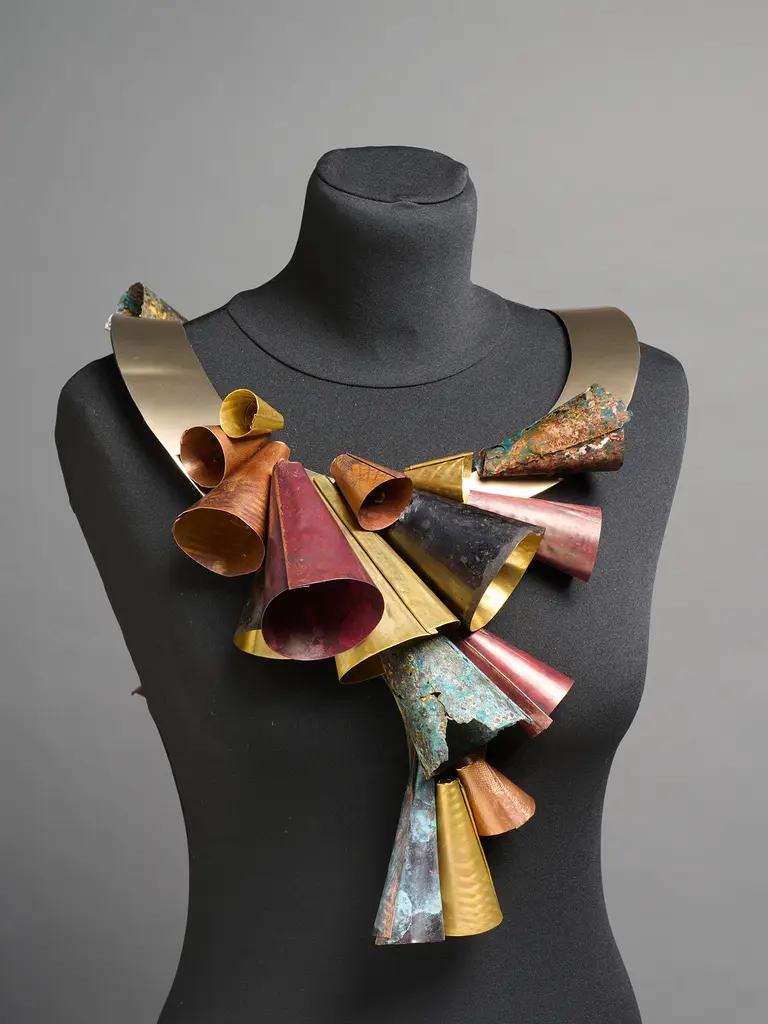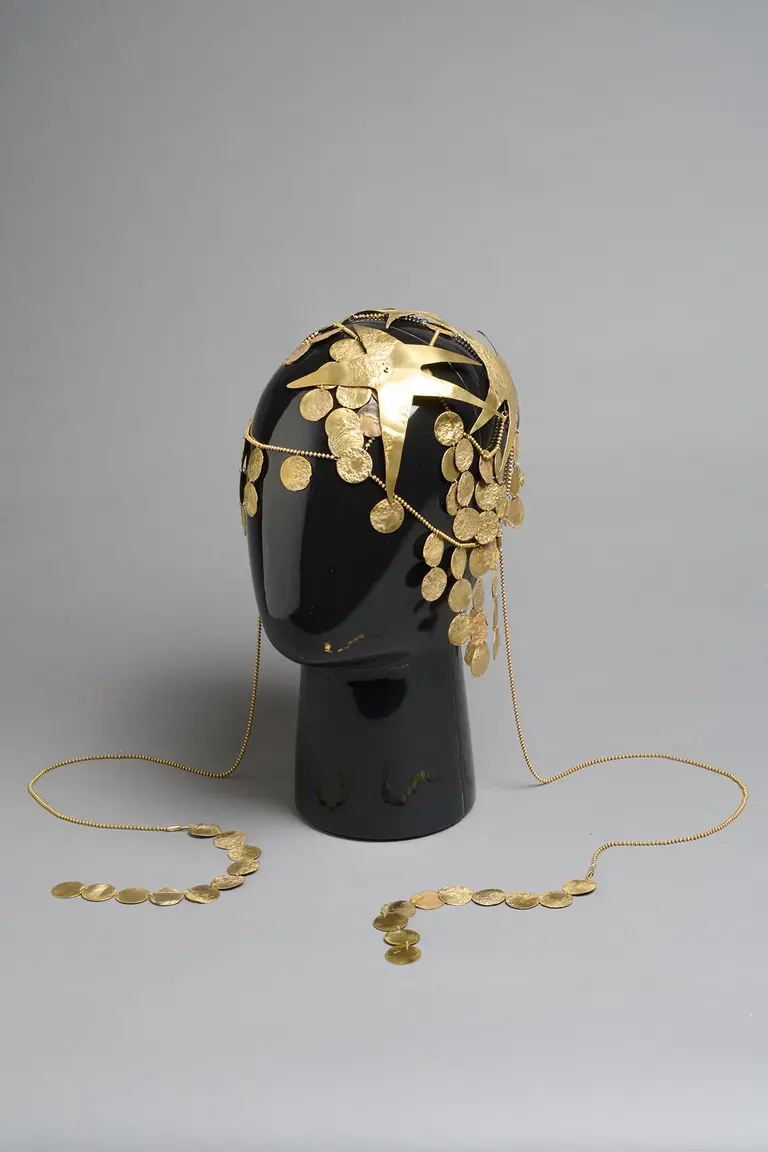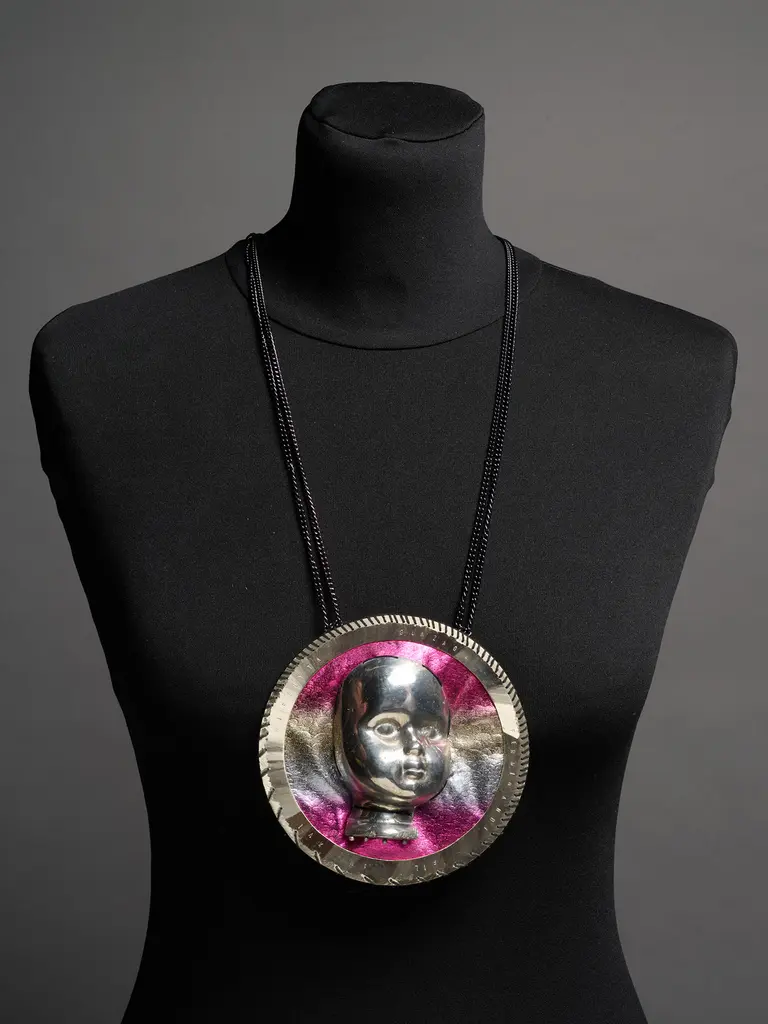Jewelry Design in Dialogue with History
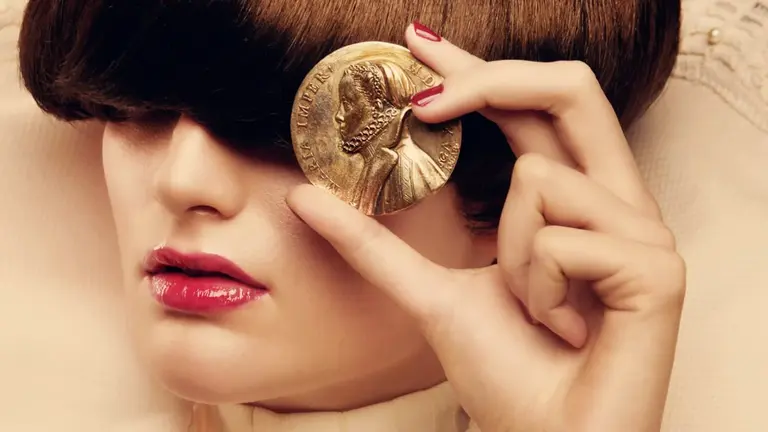
1
Viola Nemeth
Diana´s Dea-dem
Lacquered copper, moonstones, pearls
My wearable tiara is dedicated to Diana, the Roman goddess of the moon, and inspired by a medallion from 1551. The techniques and materials used are based on those of that era. A moonstone is set in the centre, filigree wires are shaped into sweeping elements, pearls and various phases of the moon adorn the piece – a diadem for a goddess (‘dea’ Latin for goddess).
2
Nika Sorokina
Bitcoin Collier
Brass, nickel silver, freshwater pearls, satin ribbon
An oversized Bitcoin coin replaces the centrepiece of a classically inspired pearl necklace. The pearls represent the masses – anonymous, equal and decentralised. Bitcoin as a new currency symbolises the shift of power from the state to the networked community. But the necklace fits tightly around the neck, making it a burden to wear. The piece is a reflection on control and value and poses a critical question: does digital power liberate us – or does it just constrain us in a different way?
3
Lena Kronsteiner
I Can’t Help Myself
Blackened copper, brass, plexiglass, paper, thread
History repeats itself, right-wing ideologies are becoming socially acceptable again, and structurally oppressed people feel increasingly threatened. That is why this piece of jewellery should not only be aesthetically appealing, but also make a political and social statement. It should give a voice to people who are often overlooked and be a sign of resistance and remembrance.
4
Lina Lobnig
Unbearable
Copper embossed, silver-plated, blackened
This piece of jewellery is intended as a feminist statement: by taking up the aesthetic features of historical coins and recontextualising them, it counters patriarchal power displays with a narrative of resistance. Worn hidden in the hair, the hairpins symbolise 's defiance and a quiet but powerful rebellion. Instead of ‘Domine dirige nos’ (Latin for ‘Lord, guide us’), they now read ‘No God, no state, no patriarchy’.
6
Pia Pollems
Gold Rush
Embossed brass, human hair
In my work, I want to make visible those who are most affected by unfair distribution of wealth and structural burdens and who therefore do not appear on coins: women, people with migration experience, older people and other disadvantaged groups. While coins with a long tradition display wealth and power, others often bear the burden that comes with it – through unpaid or invisible work. The floor-length coin chain is dedicated to those who have been forgotten behind the wealth.
The gender care gap in Austria currently stands at 43 per cent.
The gender pay gap in Austria was 18.3 per cent in 2023.
In 2024, women* had to work 61 days longer than men to earn the same salary as their male colleagues.
Women in Austria devote 4 hours per day to unpaid care work.
One in five women* in Germany is considered at risk of poverty.
40 per cent of single parents are at risk of poverty, the majority of whom are women*.
Women* have 13 per cent less free time on average than men.
18.4 per cent of 65-year-old women* had no pension entitlement of their own in Austria in 2017.
40.55 per cent is the average increase in men's pensions compared to women's*.
The volume of inheritance predicted for Austria over the next 30 years is € 600 billion.
47 million people in Europe cannot afford to heat their homes adequately.
There are 36 new billionaires in Austria since 2024.
700 million people worldwide live in extreme poverty.
0.00001% of the richest people in the USA own 1.81% of the total wealth in the USA.
7
Stina Bross
Lace Collar
Laser-cut stainless steel riveted, sterling silver, brass, pearls, pearl silk
The collar, which usually fits around the neck, has been reimagined in this piece of jewellery and placed on the chest as a pendant on a pearl necklace. In contrast to traditional lace, the Lace Collar’ surprises with its unexpected weight, yet retains its lightness thanks to the detailed lace pattern.
8
Amra Savel
Voices Behind the Veil
Brass, punched, stamped, shaped, assembled, set coloured agate
In this work, I reflect on the role of women in patriarchal societies using an antique crown. A veil made of 345 coins with terms such as ‘whore’ or ‘gender pay gap’ refers to the discrimination against women. The crown transforms from a symbol of power into a sign of female strength and oppression, a call for visibility and justice. It can stand for all those whose voices have been silenced.
9
Rula Aborashed
Floral Splendour
Nickel silver, copper, brass, pearls
This choker is inspired by a coin from 1717 and embodies the Baroque style with its floral shapes and rich decorations. The nickel silver band is artfully adorned with three-dimensional flowers made of rose-coloured copper. Delicate brass tubes radiating outwards and ending in shimmering freshwater pearls emphasise light, movement and the symbolic beauty of the Baroque era.
10
Maika Lehmann
you pearl
Brass, nickel silver, shaped, mounted, freshwater pearls, balls made of dyed falcon's eye, camel bone
The tiara symbolises the role of coins as the most important store of value in our society – in a money-oriented world, material values are often placed above spiritual values.
The pearl jewellery represents the inner spiritual core of human beings, which is carried through life in our minds. The hairnet emphasises the head as the bearer of this spirit. The veil separates our inner selves from the outside world – a symbolic barrier between thoughts and society.
11
Andrea Talaber
Cone-shaped chest and back jewellery
Copper, brass, embossed, rolled, patinated, mounted on leather
The jewellery object is inspired by lace collars, which were worn by both sexes in the fashion of the time. Instead of fine lace, I chose ‘hard’ metal as the material for this piece.
Cone-shaped elements made of copper and brass were textured by rolling, forged into shape and given a new surface finish through patination. They are attached to a strong leather strap.
Contrary to expectations, the metal cone breast and back jewellery is as light as lace for the wearer.
12
Laura Licht
The Star Money
Brass, stamped, flamed, assembled
Based on the fairy tale by the Brothers Grimm.
Selfless kindness and generosity are rewarded, even in times of great need.
A girl’s last shirt in exchange for a shower of stars made of ‘nothing but shiny thalers’.
Young people who receive bedtime stories in the form of money and are told that they will lead a carefree life.
Capitalist ideas firmly anchored in our society.
A slightly different perspective on the moral of the story.
13
Sophie Hausbacher
Portrait head necklace
Nickel silver, cast pewter, assembled, textile
Based on a medal depicting Hippolyta Gonzaga Fernández in three-quarter profile, the head of a porcelain doll is cast in pewter using the sand casting process. The original inscription on the medal is stamped onto the outer frame of the pewter casting. The aim was to make the historical portrait three-dimensional.





